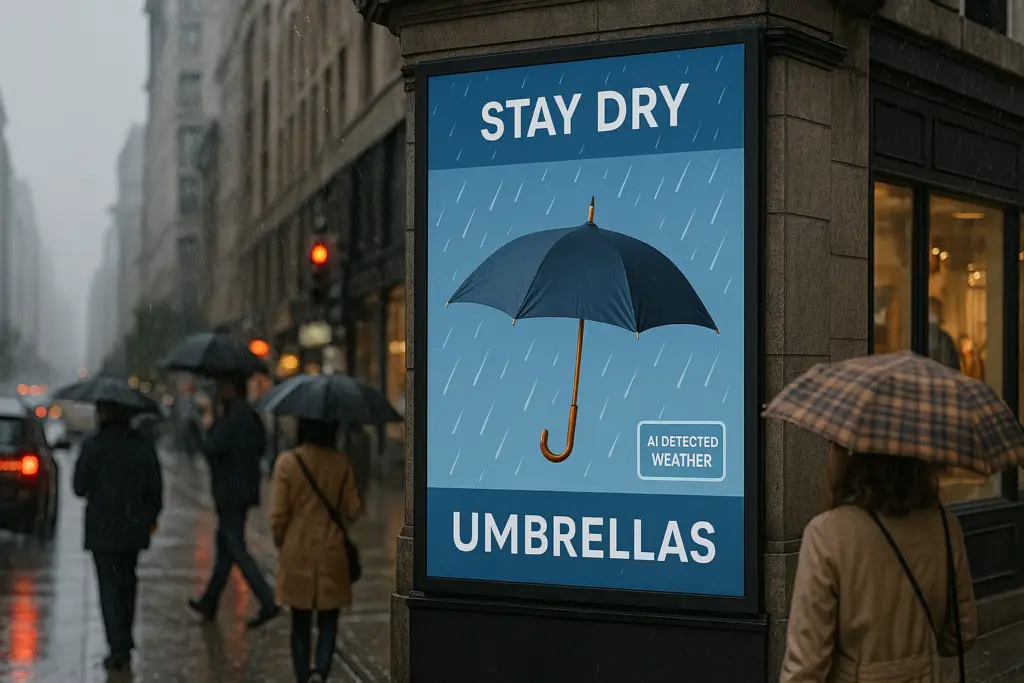After 17 years in digital signage, I’ve watched countless technology trends come and go. Some deliver on their promises. Others become expensive lessons in believing marketing over reality. AI in digital signage is both.
Right now, vendors are slapping “AI-powered” on everything from basic scheduling software to simple motion sensors. Meanwhile, business owners are spending serious money on “artificial intelligence” that’s about as smart as a digital clock. But here’s the thing: when AI digital signage actually works, it can transform how your screens perform.
The problem? Most businesses can’t tell the difference between real AI capabilities and clever marketing. So they either overpay for features they don’t need, or miss opportunities to use AI where it actually makes sense.
Let me show you what’s real, what’s not, and how to avoid expensive mistakes.
The Uncomfortable Truth About "AI" Digital Signage
Walk through any trade show and you’ll see dozens of digital signage companies promising AI that will “revolutionize your customer experience.” The demos look impressive. The sales pitches sound convincing. The price tags are substantial.
But here’s what I’ve learned from working with these systems in the real world: most “AI digital signage” isn’t actually artificial intelligence at all.
What vendors call AI:
- Content that changes based on time of day (that’s called scheduling)
- Screens that detect motion and start playing (that’s a basic sensor)
- Software that rotates through different ads (that’s a playlist)
- Systems that show weather-based content (that’s an API call)
- Basic demographic detection that shows “male/female” content
What AI digital signage actually does:
- Analyzes audience demographics in real time and adjusts content accordingly
- Learns from viewer behavior to optimize content performance automatically
- Generates personalized content based on multiple data inputs
- Predicts optimal content timing using machine learning algorithms
- Creates dynamic content variations based on contextual data
The difference matters because real AI costs more, requires better hardware, and needs ongoing data management. Fake AI just costs more.

Understanding Real AI-Powered Digital Signage
Traditional digital signage runs on fixed schedules. AI digital signage doesn’t. It reacts and adapts. It reads the room, literally, and changes what it shows based on what’s happening in real time.
These systems take in signals from their surroundings, analyze the data on the fly, and adjust content accordingly. So instead of pushing the same message to everyone, everywhere, all the time, AI signage delivers the right message to the right audience in the right moment.
Where the Data Comes From
To pull this off, AI signage taps into a wide range of data sources:
- Sensors: Temperature, light, sound. Ambient factors that help tailor content to the environment.
- Computer vision: Cameras (with privacy-respecting AI) detect things like demographics, group size, or attention span without identifying individuals.
- Live data feeds: Weather, traffic, social media trends, internal business analytics, all fair game.
- Location tools: Beacons and GPS help track foot traffic and trigger content when people approach.
- Viewer interactions: Touchscreens, mobile scans, and app clicks provide real feedback in real time.
All this data feeds into machine learning systems that get smarter with use. The more they see, the better they perform.
But here’s what most vendors don’t tell you: collecting data is easy. Getting useful, accurate data that actually improves decision-making? That’s the hard part.

What You Can Actually Do with AI Digital Signage
AI isn’t just about automation, it’s about better communication. Here’s how it plays out in practice:
Personalized Content, On the Spot
- Show different content to different age groups
- Adjust based on how long someone lingers near a display
- React to group size. Show one message to a solo shopper, another to a crowd
- Even adapt in real time based on facial expressions (yes, really)
Smarter, Context-Aware Displays
- Promote iced coffee when it’s hot, umbrellas when it rains
- Shift messaging by time of day or event schedules
- Trigger content based on local traffic or news alerts
Operational Intelligence
- Forecast peak times and optimize schedules
- Detect hardware issues before they turn into black screens
- Adjust brightness and power usage automatically
- Align content with what’s actually in stock. No more promoting sold-out items
Bottom line: AI-powered signage isn’t just flashier. It’s more relevant, more efficient, and more capable of delivering ROI that’s actually measurable.
Signage Success Starts Here!
When it Actually Works (And When It Doesn't)
I’ve seen AI-powered digital signage succeed in specific situations. I’ve also watched businesses waste money on AI features that added complexity without improving results.
Where AI-powered digital signage delivers real value:
Retail environments with diverse foot traffic: A clothing store using computer vision to detect age groups and gender, then showing relevant product recommendations. This works because the audience changes frequently and demographic targeting drives measurable sales lifts.
Restaurants with digital menu boards: AI that adjusts pricing, promotes high-margin items during slow periods, or highlights available inventory based on real-time POS data. When connected to actual business systems, this can increase average order values by 15-30%.
Corporate locations with employee audiences: Digital signage AI that learns which content gets attention during different times and adjusts messaging accordingly. Since the audience is consistent, the system can actually learn patterns and improve over time.
Where AI digital signage usually fails:
Small locations with consistent audiences: If the same 50 people walk past your screen every day, AI can’t do much that good content planning couldn’t accomplish better and cheaper.
Environments where content rarely changes: Museums, lobbies, or waiting areas don’t benefit from dynamic AI if the core message stays the same for months.
Businesses without data infrastructure: AI needs quality inputs. If you don’t have reliable foot traffic data, inventory systems, or audience analytics, you’re just feeding garbage into an expensive algorithm.

Applications and Benefits of AI-Powered Signage
When done right, AI in digital signage doesn’t just look impressive, it works harder. From personalized messaging to operational efficiency, here’s where AI really earns its keep.
Personalized, Dynamic Content That Actually Connects
AI makes signage smarter by reacting to the audience in front of it. Not just pushing pre-set content.
- Demographic targeting: Screens can shift messaging based on who’s nearby (think families vs. solo shoppers, younger vs. older viewers)
- Behavior tracking: AI watches how long someone looks, what they interact with, and adjusts content accordingly
- Group awareness: One person gets product details. A crowd? It’s brand storytelling time
- Emotion detection: Advanced systems can even tweak content based on visible reactions, driving better engagement
This kind of real-time personalization boosts relevance, keeps attention longer, and improves recall.
Smarter Context, Better Timing
Your signage doesn’t operate in a vacuum, and AI makes sure it doesn’t act like it does.
- Weather-based messaging: Promote hot drinks on cold days, sunscreen in a heatwave
- Time-sensitive content: Morning commuters see different messaging than evening shoppers
- Event triggers: Tie content to local happenings, sales, or foot traffic spikes
- Traffic-aware updates: Screens can adapt based on congestion, delays, or parking availability
This is contextual intelligence in action. Making signage feel more helpful, less like background noise.
Operational Efficiency That Scales
AI doesn’t just make content smarter. It helps run the entire signage network more effectively.
- Predictive scheduling: Forecast peak times and prep content schedules ahead of demand
- Preventive maintenance: Detects failing hardware before it goes dark
- Energy optimization: Automatically dims or brightens screens based on lighting or presence
- Inventory-linked promotions: Push high-margin or overstocked items in real time, synced with your POS
These backend gains don’t just save time. They save serious money over the long haul.

The Real Cost of AI Digital Signage Implementation
Most vendors focus on software licensing costs and skip the hidden expenses that make artificial intelligence projects explode budgets.
Hardware requirements: Real AI digital signage needs processing power. Your existing media players probably can’t handle computer vision or real-time analytics. Budget for commercial-grade hardware that can actually run AI workloads.
Data infrastructure: AI systems need continuous data feeds. That means API integrations, cloud storage, and often custom development work. Plan for ongoing technical support, not just installation.
Content multiplication: Simple digital signage might need 10-20 pieces of content. AI systems need hundreds of variations to be effective. Someone has to create, organize, and maintain all that content.
Privacy compliance: Computer vision and audience analytics come with legal requirements. GDPR, CCPA, and local privacy laws aren’t suggestions. Factor in compliance costs from day one.
Ongoing optimization: AI isn’t “set it and forget it.” These systems need monitoring, adjustment, and feeding. Budget for someone who understands both the technology and your business goals.
How to Actually Implement AI in Digital Signage
So you want AI-powered digital signage? Here’s how to actually pull it off without burning through your budget chasing buzzwords.
Start with a Gut Check: Planning and Assessment
Before you plug in anything, do your homework. This part isn’t sexy, but skipping it guarantees regret.
- Know what you’ve got: Are your current displays, media players, and networks ready for real-time data processing? If not, that’s your first bottleneck.
- Get clear on goals: What’s your AI signage actually supposed to do? Increase dwell time? Drive specific in-store actions? Set KPIs early.
- Think privacy, not just data: AI thrives on inputs. But every camera and sensor comes with compliance baggage. GDPR and CCPA aren’t suggestions.
- Build a data game plan: You’ll need a structure for collecting, tagging, and using data. Not just hoarding it.
- Budget like you mean it: AI isn’t just a one-time investment. There are ongoing costs: cloud services, content variation, system monitoring.
This phase is where you decide if you’re building a future-ready signage network or just creating another tech headache.
Lay the Right Tech Foundation
AI signage only works if the infrastructure can keep up. Think of it like building a smart stage: if the lights flicker and the mic cuts out, it doesn’t matter how good the script is.
Here’s what you’ll need:
- Smart displays, not just pretty ones: Bright, durable, and compatible with dynamic content
- Sensors that see and hear: Motion, cameras, touch. Whatever fuels your data strategy
- Edge computing: For real-time processing without waiting on the cloud to catch up
- Reliable cloud integration: You’ll still need centralized brains for learning and coordination
- AI-friendly CMS: If your content platform can’t automate decisions, it’s holding you back
- Security everywhere: Because nothing tanks trust faster than a data breach tied to a screen in aisle five
Scalability is the name of the game. What you build now needs to grow with you, not hold you hostage in two years.
Rethink Your Content from Static to Smart
Here’s where most AI digital signage projects fall apart: the content doesn’t know how to play along. AI can decide when to show something, but it still needs great stuff to show.
Make your content stack AI-ready:
- Modular design: Build in pieces so AI can mix and match based on context
- Multiple versions: One-size-fits-all messaging won’t cut it. Have variants by demographic, time of day, weather. You name it!
- Rules of the road: AI needs boundaries. Define logic for what shows when, and why
- Live data feeds: Hook your system into APIs (inventory, weather, traffic) to keep messaging relevant
- Performance feedback: Loop in viewer behavior and conversion data so your system gets smarter over time
This isn’t about flooding the screen with gimmicks. It’s about giving your AI the right tools to make better choices than any scheduler could.
Evaluating Vendors: Questions That Expose the Truth
Most vendor presentations focus on impressive demos and theoretical benefits. Here are the specific questions that separate real AI capabilities from marketing fluff:
Technical Architecture Questions
“What specific machine learning models does your system use?” Real AI vendors can explain whether they use neural networks, decision trees, clustering algorithms, or other specific approaches. Marketing-focused vendors will deflect to business benefits.
“How does your system handle model training and updating?” True machine learning systems need continuous retraining as new data becomes available. Static systems just follow pre-programmed rules.
“What happens when your AI makes wrong decisions?” Good systems have confidence scoring, human override capabilities, and fallback procedures. Vendors who claim AI infallibility are selling snake oil.
Performance and Validation Questions
“What specific metrics improve with your AI, and by how much?” Look for concrete data: conversion rate improvements, engagement increases, operational cost reductions. Vague promises of “better performance” aren’t sufficient.
“Can you provide references from similar deployments with measured results?” Real AI implementations should have case studies with actual performance data, not just testimonials about impressive technology.
“How long does it take for your AI to start showing improvements?” Machine learning systems need time to gather data and optimize. Claims of immediate improvements suggest rule-based automation, not learning systems.
Final Thoughts
Let’s be honest: AI in digital signage is still more promise than practice for most businesses. Sure, the tech is moving fast. AI and machine learning can now help predict audience behavior, fine-tune what shows up on screen, and even automate the whole content loop. But most networks still aren’t tapping into that potential. Not fully.
That said, the ones who are, even in small ways, are already pulling ahead. They’re using intelligent systems to tweak messaging based on time of day or foot traffic. They’re running signage that adapts on the fly. And they’re building data feedback loops that actually inform business decisions, not just content rotations.
And here’s the uncomfortable truth for everyone else: if you’re not thinking seriously about how to integrate AI into your signage workflows this year, you’re going to fall behind. Not in some vague “future of work” sense. In real ways: missed engagement, wasted budget, lower ROI.
But here’s an equally important truth: most businesses aren’t ready for AI digital signage yet. They don’t have the data infrastructure, the technical expertise, or the clear business objectives that make AI investment worthwhile. They’d be better served focusing on content strategy, screen placement, and basic performance measurement.
The key is knowing which category you’re in.
That’s why we put this guide together. It’s not about chasing buzzwords. It’s about helping you figure out what’s real, what’s useful, and where to start. Because the potential of intelligent digital signage isn’t just theoretical anymore. It’s measurable. It’s here. And it’s quietly reshaping how screens perform in the wild, if you know how to use it.
FAQ
How is AI actually used in digital signage today?
Right now, AI is powering content personalization, audience analytics, and real-time decision-making. Think screens that change based on who’s nearby, or content that auto-generates itself using generative AI tools. It’s less sci-fi and more smart automation for marketers who are tired of updating playlists manually.
Is AI in digital signage just hype, or is it useful?
It’s both. Some vendors slap “AI” on anything remotely automated. But real use cases—like content targeting based on demographics, or auto-generating localized promos—are already delivering ROI. The key is knowing when AI actually improves your workflow, not just inflates your buzzword count.
Do I need AI to run an effective digital signage network?
Not necessarily. Most networks still run fine with scheduled content and basic CMS features. But if you’re managing scale, trying to personalize messaging, or just want to save time, AI can help automate the grunt work and optimize your content strategy without hiring a small army.


